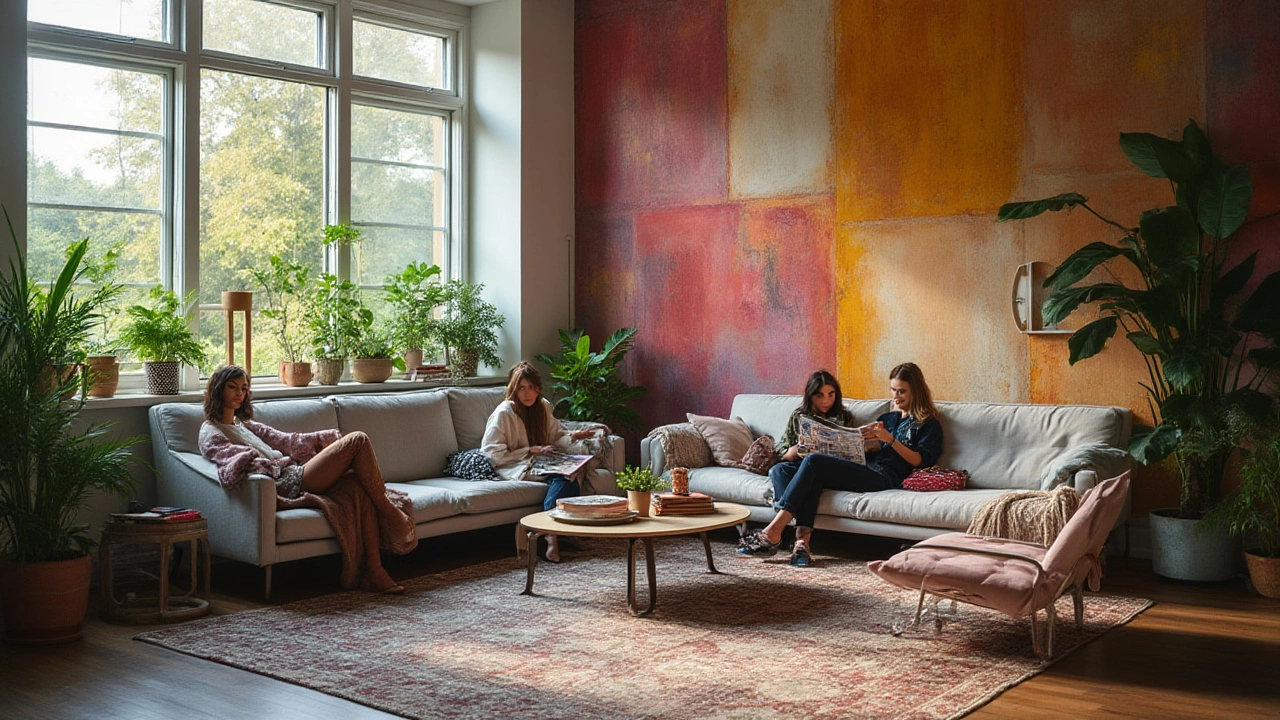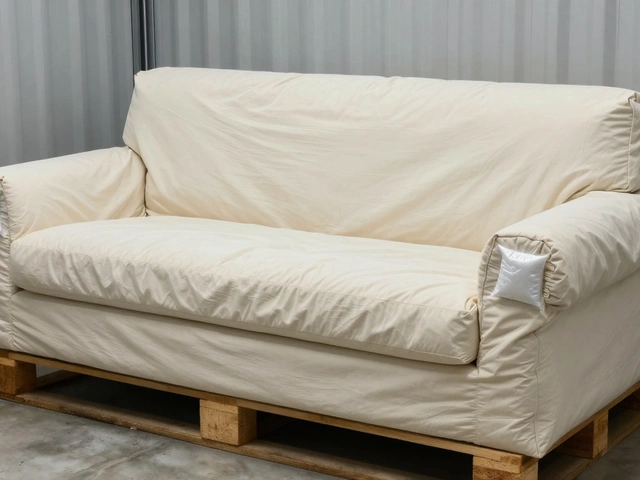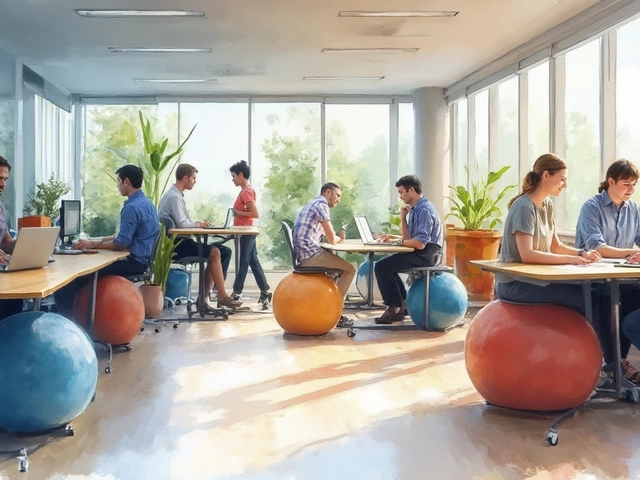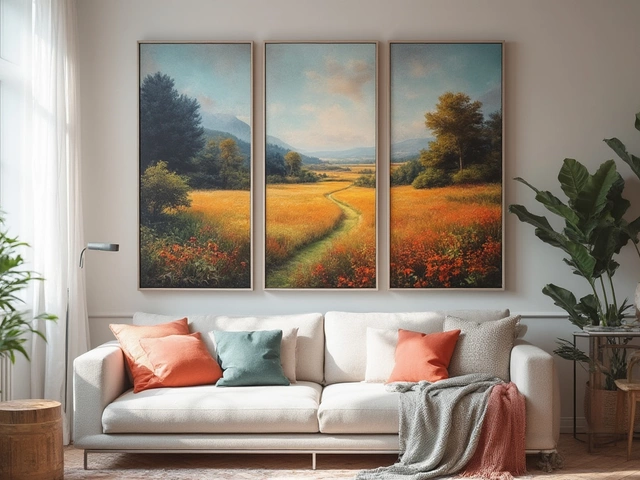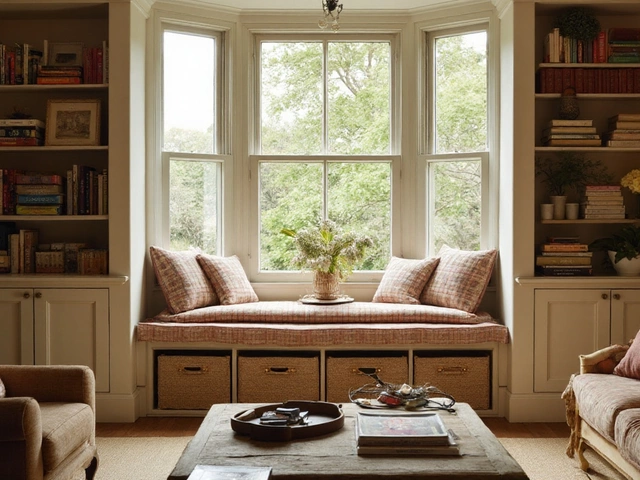Textured wallpaper. Two words that instantly summon images of some grandmother’s parlor—ribbed, velvety, and probably beige. Or maybe sparkling, embossed patterns from a 1970s den. Guess what? That’s exactly why textured wallpaper sparks such strong opinions. But if you check out design magazines, scroll through Pinterest, or even binge on home makeover reels, you’ll notice something wild: textures are crawling back onto our walls in surprising ways. Are people just nostalgic, or is there a smart reason for this comeback? Let’s pick this apart and see where textured wallpaper stands today.
The History Behind Textured Wallpaper Hype
Textured wallpaper isn’t some flash-in-the-pan decorative experiment. The first textured wallcoverings popped up in Europe as early as the 17th century. Back then, if you couldn’t afford those hand-carved wooden panels or marble, you’d glue embossed or patterned papers to your walls. These luxury add-ons mimicked expensive materials at a fraction of the cost—a kind of early interior hack. In the Victorian era, textured wallpaper got fancier. It came in deep jewel tones with velvety flocking that felt plush and regal. By the mid-1900s, everyone who was anyone coated their walls with bold, tactile prints. High-gloss vinyl, foils, even wallpaper with real sand or glass beads—anyone remember 1970s disco dens?
Then suddenly, bland was in. Flat walls, eggshell paint, minimalist everything replaced those busy, touchable surfaces. Homeowners ditched the drama for something safer. But nostalgia works in cycles. Every couple of decades, something considered old-fashioned comes back swinging. Today, textured wallpaper is seeing a revival, only this time it’s pared down and modern. Even big-name designers like Kelly Wearstler and Martyn Lawrence Bullard are using subtle textures to add dimension without overwhelming rooms. Want proof? Take a look at Houzz’s 2024 trend survey: wall textures are trending among homeowners aged 28-45, many of whom are first-time buyers renovating starter homes.
| Era | Texture Types | Popular Materials |
|---|---|---|
| Victorian | Flocked, Embossed | Velvet, Heavy Paper |
| Mid-century | Foil, Vinyl, Beaded | Metal, Glass, Synthetic |
| Modern | Subtle Weaves, 3D Panels | Grasscloth, Cork, Linen |
The short story is: textured wallpaper isn’t chained to a single generation. It adapts and pops up whenever people get bored of blank walls. Today, we’re seeing more subtle materials and clever installation techniques. The question flips from “Is textured wallpaper old-fashioned?” to “How do you use it without looking like you’re stuck in the past?”
Why Textured Wallpaper Still Works—And When It Doesn’t
Let’s be real: there are some awfully ugly rolls of textured wallpaper lying around in thrift stores. Some designs do look like relics from a time capsule. But here’s where it gets interesting—the technology and artistry behind wallpaper have exploded in the last ten years. High-end brands like Arte, Phillip Jeffries, and Farrow & Ball offer options using mica chips, grasscloth, linen, and even recycled denim. That means modern textured wallpaper can look natural, luxurious, and even eco-friendly. The difference is in the details. Today’s textures are often neutral, understated, and woven from organic materials. Walk into an updated hotel, spa, or new-build home, and you’ll probably brush your fingers over a beautifully subtle grasscloth wall rather than a turquoise floral flock. It’s all about how you use it.
So, does textured wallpaper work for every room? Not exactly. Heavy, dark, or loud patterns can swallow up a small space, especially if the room doesn’t get much natural light. That said, the right texture can do wonders in places where you’d expect nothing but paint. Powder rooms, hallways, and home offices often benefit most. For example, a bit of basketweave wallpaper behind a desk feels calming and sophisticated. Textured wallpaper also hides minor wall blemishes, making it a lifesaver in older homes. But here’s a heads-up: textured wallpaper can be a pain to clean. Dust and moisture love hiding in deep grooves, so it’s usually a no-go in kitchens or direct-splash bathrooms.
If you’re on the fence, here’s a list of a few pros and cons:
- PRO: Adds visual depth and hides wall flaws
- Can feel either vintage or super-modern, depending on the material
- Some options absorb sound, so they soften echoes in busy spaces
- Boosts resale appeal in accent areas when tastefully used
- CON: Can be hard to remove, especially if it’s a peel-and-stick on textured plaster
- Deep textures trap dust and can stain if not properly sealed
- Poor choices can look dated or drive up installation costs
If you’ve got your heart set on maximizing resale value, it’s better to stick to subtle patterns and muted colors rather than neon swirling florals. Classic textures like faux linen or grasscloth tend to look timeless, not tired.
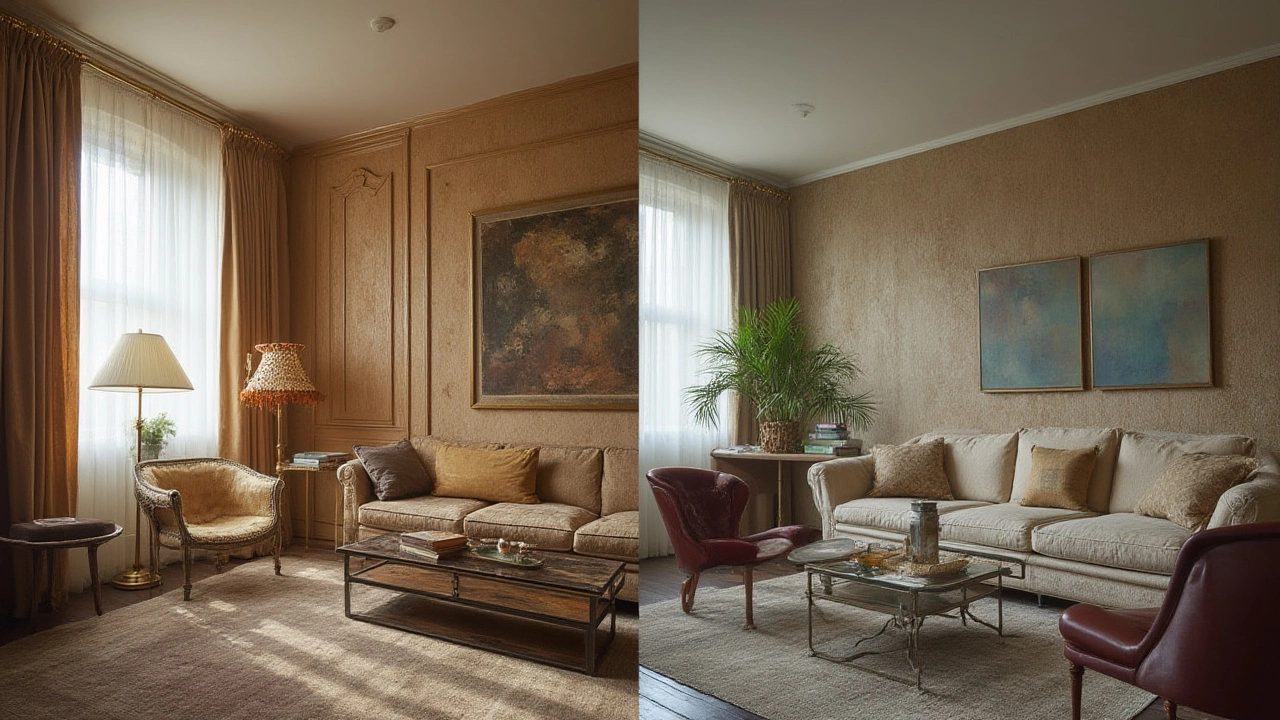
How to Choose the Right Texture for Your Space
Picking the right textured wallpaper isn’t just about what looks good online. Lighting, room function, and even your pets should all factor in. Think about this: sunlight tends to amplify textures. So, highly textured walls in rooms with big windows will pop even more, which can be great if you want a feature wall, but overwhelming if it’s everywhere. If your home’s style leans modern and sleek, go for barely-there texture—think woven linen or fine herringbone. Vintage lovers can still rock those dramatic damask or flocked prints, but limiting them to a small foyer or a single wall keeps things fresh instead of dated.
Pay attention to color, too. Light textures in shades of ivory, taupe, or gray won’t shrink a room. Darker colors with heavy patterns tend to close in tight spaces. Designers also recommend pairing textured wallpaper with smooth furniture or glossy surfaces for balance. For example, grasscloth wallpaper looks incredible paired with polished concrete floors or lacquered cabinets—texture and shine never compete, they play off each other instead. Check manufacturer details about durability. Some natural fibers don’t play well with pets or sticky fingers, so avoid those in kids’ rooms or mudrooms. And let’s not forget ease of removal. Removable, non-woven wallpaper has exploded in popularity for a reason: it can give you a high-end textured look without the lifetime commitment or hours of scraping when trends change again.
You might be surprised by the creative ways to use subtle textures. For instance, layering two similar tones—like matte gray paint with a pale textured wallpaper panel in the same color family—creates quiet depth rather than obvious contrast. Even something simple, like faux wood wallpaper in a reading nook, brings warmth without the expense or hassle of wood paneling. If you want to test the waters, start with peel-and-stick samples. Slap a few swatches on different walls and check them throughout the day as natural light changes. Trust your instincts. The right texture should make you want to touch the wall every time you walk by—it should add to your space, not distract from it.
Tips for Making Textured Wallpaper Feel Timeless
Textured wallpaper can scream ‘old-fashioned’ or whisper ‘luxury’ depending on execution. If you’re worried about getting stuck in a style time warp, designers swear by a few evergreen moves. First, think small. One feature wall in a powder room, behind the headboard in a bedroom, or wrapping the inside of a bookcase adds character without overkill. Second, use tonal layering: keep textured walls and furniture in the same color range, just play with glossy vs. matte or different thread counts. This shifts the focus from ‘pattern’ to depth. Third, mix textures in the room, not just on the walls. Pair a soft woven wall with smooth stone floors, chunky knit throws, or shiny metal accents. When every surface fights for attention, you get visual chaos. Balance is king.
Want it to look modern? Go tone-on-tone (such as soft gray grasscloth with pale gray trim), choose organic textures over wild geometric embossing, and stay away from anything shiny or iridescent unless you’re styling a glam bar nook. For people with a love of vintage, there’s still a way to honor history without slipping into kitsch. Use flocked or damask wallpapers only in unexpected ways—the back of a closet, the inside of cabinetry, or as framed panels instead of covering every square inch.
Here are a few more tricks for a space that ages gracefully:
- Test large samples in your space before committing—texture reads differently in every light
- Match the wallpaper with classic trim or modern molding for an intentional, built-in look
- Combine natural textures (cork, grasscloth, linen) with smart tech-lighting for a warm, layered vibe
- Invest in professional installation for real grasscloth or 3D panels—DIY mistakes stand out more with textures
- Seal and clean textured walls regularly to keep them looking sharp
- Choose versatile patterns so it’s easy to swap out art and furniture down the road
So, is textured wallpaper old-fashioned? Not if you know how to use it. Like denim, it can be classic or drop-dead trendy, depending on the wash—or in this case, the fiber and the finish. It’s a shortcut to personality, depth, and warmth in rooms that need a little something extra. And right now, designers are reaching for it in creative, surprising ways. With a critical eye and some smart planning, you don’t just dodge the old-fashioned label—you set the stage for spaces that feel like home.
